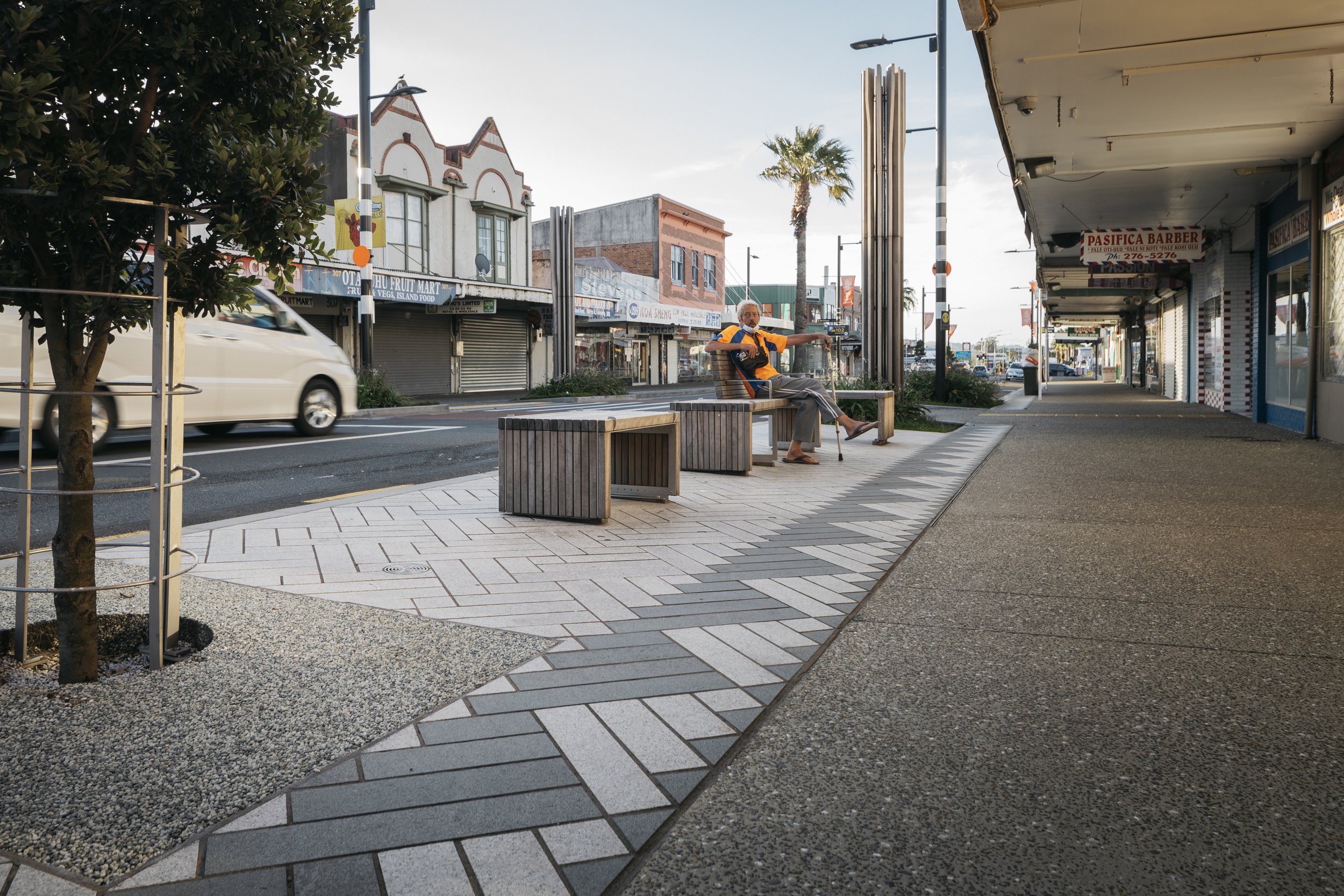Otahuhu Streetscape Upgrade
Boffa Miskell’s Ōtāhuhu Town Centre Streetscape Upgrade reflects the culture, values and history of the South Auckland suburb, and beyond making physical changes, improves civic pride and stimulates economic growth in the area.
Commissioned by Auckland Council, the project includes upgrades to both below and above-ground infrastructure, and safety and aesthetic improvements across around 1.5 kilometres of streets.
Otahuhu Street Upgrade plan overview. Image credit - Boffa Miskell.
Ōtāhuhu is a diverse community with a distinctive Pacific identity, and the $20 million project tasked Boffa Miskelln to provide place-specific design development process and respond to and reinforce a sense of place in Ōtāhuhu using a palette of materials, street furniture and planting that ties the streets together and reflects the history and cultural diversity of Ōtāhuhu.
“In order to achieve the principal objectives we set out six design strategies,” says project lead Yoko Tanaka.
“These articulated our approach to the transformation of the town centre and provided us with a set of points of reference.”
The designers collaborated with key stakeholders such as local businesses to help establish a sense of ownership and pride over the streetscape, and worked with Mana Whenua to enhance, protect, reinstate, develop and articulate Mana Whenua cultural landscape.
The project has created safe and attractive streets and crossing points, promoted walking, cycling and public transport, and considered a variety of users and their range of requirements, including those with impairments.
The designers collaborated with key stakeholders such as local businesses to help establish a sense of ownership and pride over the streetscape.
Ōtāhuhu’s existing streets favoured vehicles and had minimal, or unsafe, pedestrian crossing opportunities. Boffa Miskell’s design has narrowed the traffic geometry and added kerb projections for crossings and planting. Raised tables on side street intersections have been added to reduce the approaching speed of vehicles.
Sustainability has been a key focus, from applying water sensitive design techniques, to using high quality, durable materials and energy-efficient lighting, and improving the air and environmental quality.
The client challenged Boffa Miskell to develop an improved bio-filtration garden forebay design, to filter floating rubbish and sediment from incoming water from the road before reaching the garden, and therefore reduce maintenance requirements. An Auckland-first prototype bio-filtration garden catch pit has been developed and installed in Ōtāhuhu.
‘We developed an improved bio-filtration garden forebay design that would filter the bulk of floating rubbish and sediment out of incoming water from the road before it entered the garden, thus reducing the maintenance requirements,” says Boffa Miskell landscape architect Alex Smith.
Healthy Waters is monitoring the success of these units to see if they can be implemented elsewhere.
The Client Team nominated two Mana Whenua design representatives for recommendations and collaboration.
Wayfinding artworks provide Mana Whenua cultural and heritage references, directing viewers to local landmarks via vertical columns referencing both mana whenua place names and the volcanic heritage of Ōtāhuhu.
The Boffa Miskell team developed an improved bio-filtration garden forebay design to filter floating rubbish and sediment from incoming water from the road before reaching the garden.
Tree species and amenity planting, and water sensitive design, relate to Taiao and Muri Tu, protection of the natural environment and environmental health.
The pattern of the ‘cultural seam’ represents maunga which links to the project Kōrero, Te Tapuwae a Mataaho (Sturges Park) and Ōtāhuhu (Mt Richmond) as well as the design narrative of Ōtāhuhu Station. Two tones of natural stones are used in the pattern.
“We were inspired by the daily life, the hopes and aspirations of its ethnically diverse community and significant youth population, to deliver a streetscape that truly reflects, supports and contributes to a thriving and culturally rich Ōtāhuhu community,” says the design team.
“We understood the significance of the cultural design opportunities offered by the overlaying of local Māori history and the intrinsic cultural values represented in the Te Aranga Design principles with the very visible and vibrant cultural expression of the strong Pacifica community, and the more recent infusion from south-east Asia- all contributing to Ōtāhuhu’s rich and culturally diverse community that collectively define its unique sense of place.”


